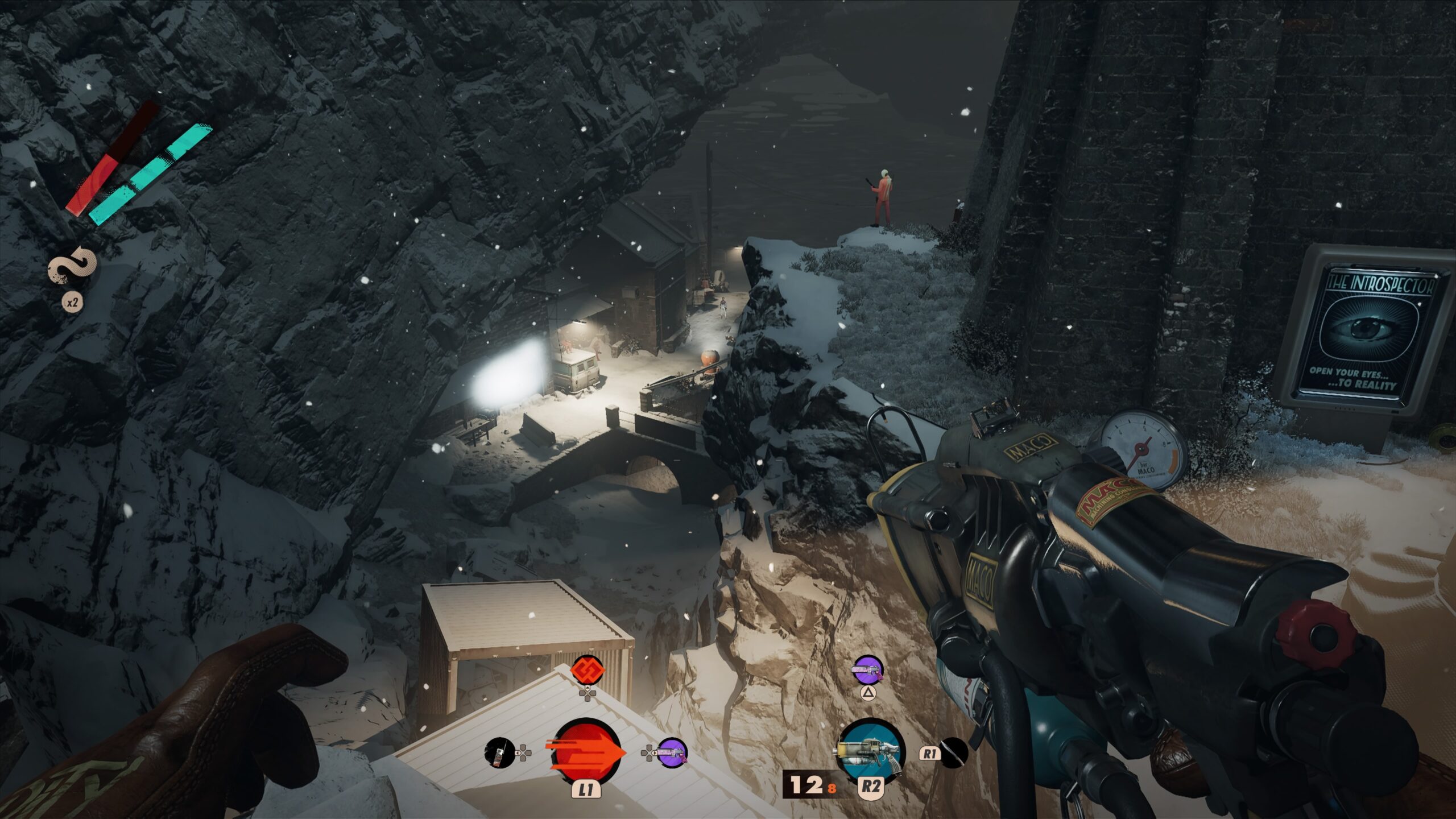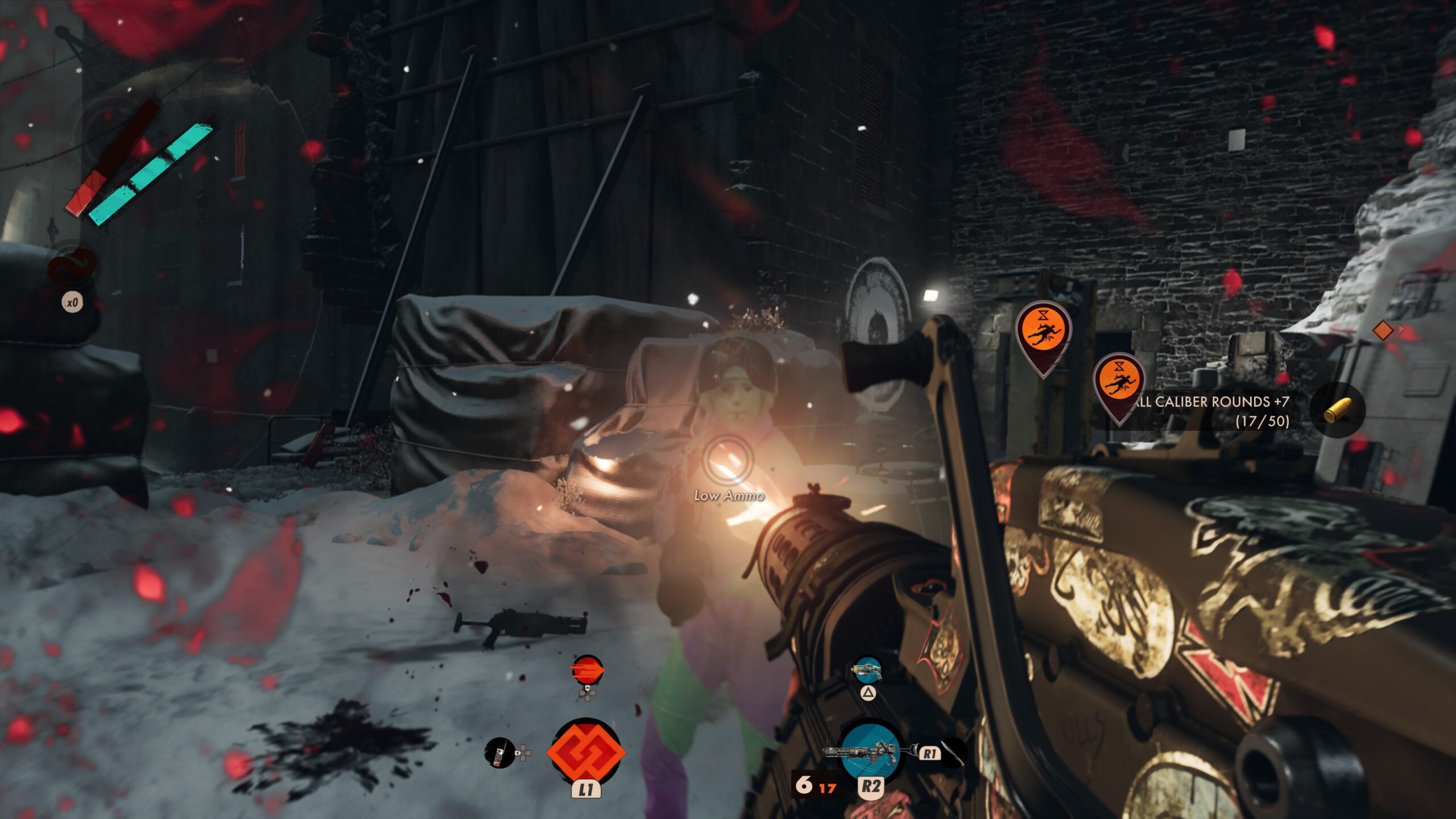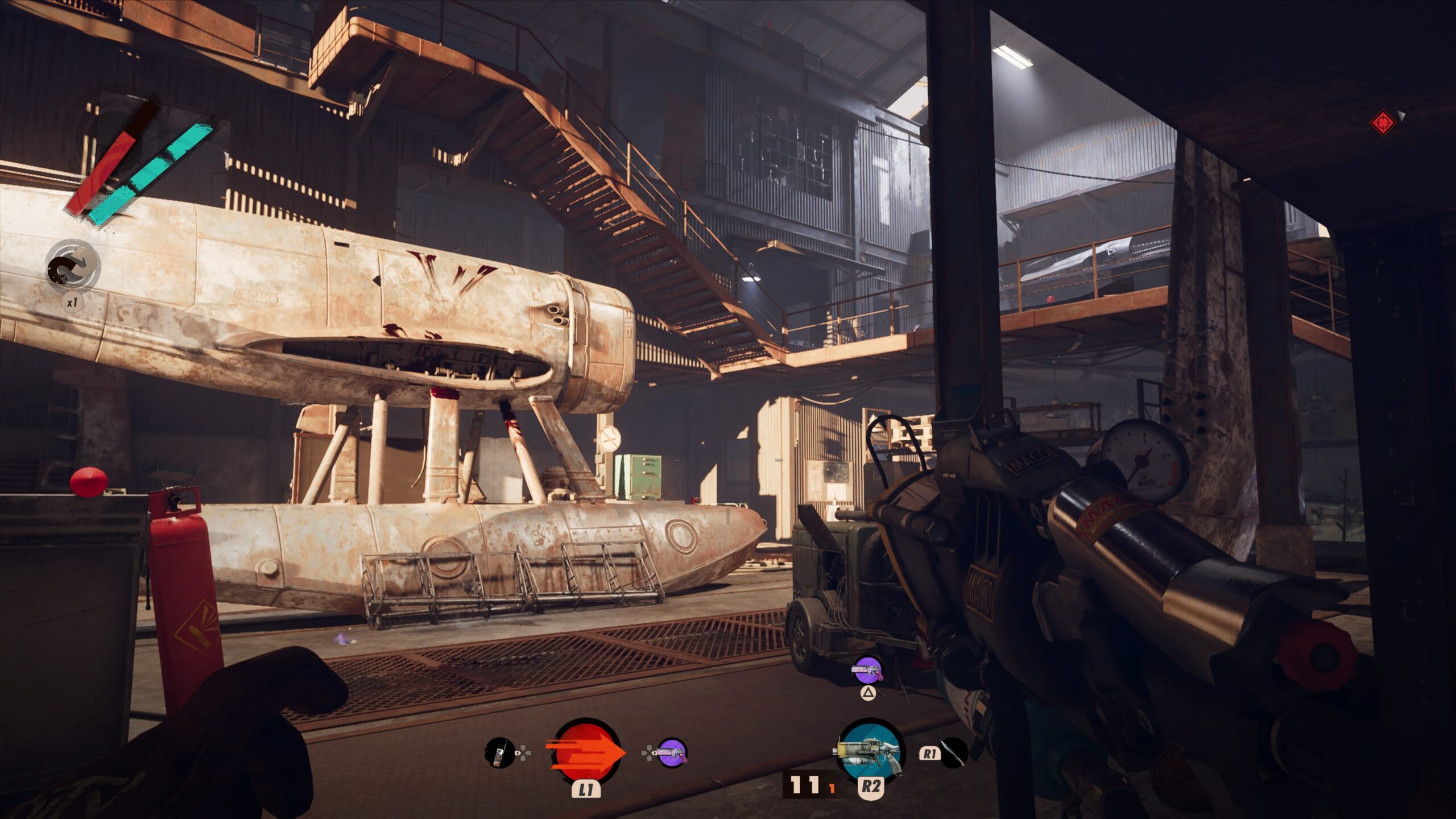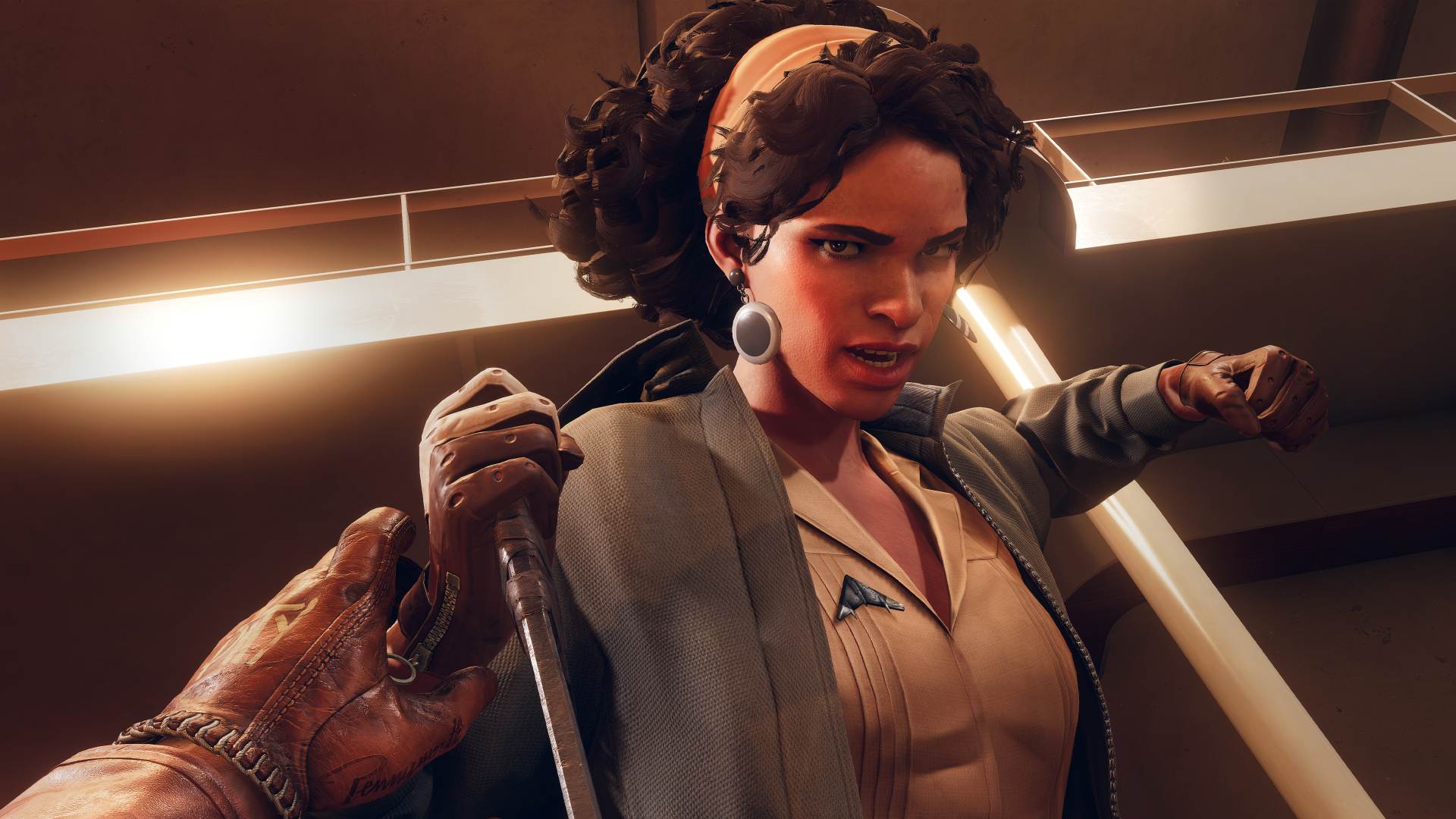After finally getting some hands-on time with Deathloop, it feels like an Arkane coalescence
Live, die, repeat. Every morning, Colt wakes up on a nondescript beach in Blackreef, no matter what happened the night prior, and is left to uncover the mystery of why this is happening, and how to stop it. I’ve now played through a few of these loops myself, and while I’m still discovering the answers to Colt’s questions, I feel I can safely answer one: just what is Deathloop?
There’s a tendency, with a lot of media, to describe it in the context of other works. It’s not unique to games, but it’s certainly easy for us to do with phrases like Souls-like, roguelike, Metroidvania, and so on. They’re useful in some contexts, especially to describe the places in which a game is pulling ideas from, paying homage to, or even just working within similar genre confines.
Deathloop certainly feels akin to some, but no single tag can narrow it down quite enough. In the time I’ve had to go hands-on with it so far, it has reminded me of a lot of different inspirations, while also feeling a bit all its own. We’ve seen Deathloop in a preview before, but its hands-off structure meant we got an impression of what it looks to be, and what it might feel like to play the game.
But now I’ve had some time to actually play the dang game, and I’ve got a lot to talk about. Let’s start back at the beach.
At its core, Deathloop is a time loop game. After an introductory segment of missions, you—as Colt—are left to loop through the day, trying to find a way to take out the eight Visionaries dotted across Blackreef, ending the loop. The who, what, where and when are left for you to discover, as well as the how and why of Blackreef’s incessant looping.
Part of the fun is the mystery of it all. It might sound like a simple enough set-up, but these characters’ lives are fraught, and as Colt discovers better and better methods for tangling them up in strings and eliminating them, he discovers more about the island itself too. Finding out how this all interlinks is really fun, but it’s also why I’m not going to dive too deep into actual solutions of how to take anyone out.
To lay out exactly how Deathloop works though, here’s how a day typically starts. After waking up on the beach, you pick out which area you want to investigate during the time slot. Every day is split up into segments of time—morning, noon, afternoon, and evening—though you can spend as much time as you’d like in the area once you enter. Every area changes depending on the time of day you visit it; while Updaam might be a quaint neighborhood during the day, there might be more party-goers and loop-participators in the area later, having fun and standing in previously unoccupied lanes. And all of them want to take down Colt for trying to rain on their parade.

So, then, the idea might be to infiltrate, rather than kick down the doors. Colt’s certainly well-equipped for this, and playing stealth in Deathloop feels really good. A big part of this is the Spiker, a gun you can find pretty early on thatbecomes a bit of a staple of your arsenal (more of how that happens a little further on). It’s a pneumatic nail-gun with crude iron sights, and seems just barely intended for any amount of combat, but it’s quiet, a one-hit on headshots, and thank heavens, it never jams.
Because when the action goes loud and the many masked, frolicking participants in Blackreef’s loop descend upon Colt, a jam is not what you want to happen. The guns of Deathloop feel very mechanical in nature, with Colt having to open mechanisms and cram in flat-drum barrels on big weapons. The feel really comes through in the Dualsense as well, where a gun jam will actually catch your trigger, warning you to find a safe spot to clear it out.
This isn’t an arena shooter or anything; Colt can only take so many hits before death, and it’s easy to get quickly outnumbered. When a firefight broke out, I was often sprinting around corners, sliding and spraying as I tried to take out who I could with what little I had.
It’s here that the loop really plays back into itself. Colt can save some equipment using Residuum, a system and currency you’re encouraged to pick up early on by completing a certain task. Residuum lets you bank currency that you can either absorb from anomalies in the world or through kills, and then infuse into various parts of your armory, including guns, trinkets, and the powers that major characters wield called Slabs.
I quickly developed an affinity for the Spiker, as well as a devastating handgun I took off a target that could punch through just about anything. The tradeoff, though, is that early on your arsenal is still limited, and ammo is only as much as Colt can carry. It led to situations where I was having to rapidly acclimate myself to weapons on the fly, because it’s what I could find littered around the battlefield. It was chaotic and messy, and it was fun. Turns out there is some joy to be had in breaking stealth without the usual moral consequences found in other games, like Dishonored.

Whenever I entered an area for a slice of the day, I usually had a single goal in mind. It might be to learn more about a certain topic, or to figure out how something might link into another piece of info I had, or even just to take out a Visionary and get their Slab power, so I could turn it into my own. The Visionaries themselves are no pushovers; one in particular, Charlie, took me aback with how he uses his own Slab, Shift—essentially a blink—in firefights. Taking them out isn’t easy, and the end goal is to take out all eight in a single day.
Thankfully, that goal never feels too daunting, as Arkane has menus and systems for tracking Leads around the different subjects and topics of inquiry on the island. It never felt like I didn’t have a way forward, though I’m interested to see how that pans out across the full game, as threads start to expand out and tie back into each other. They’re not all assasination-related, either; some might just point you towards an area of interest, a little scrap of lore, or a really nice gun. Look, if you’re going to take down powerful Visionaries, it might help to have a solid weapon or two.
It helps that the areas are varied, as well. Each locale feels dense, and it evolves as the day changes too. Through several variations of the same place, I saw how the density of guards and enemies changed, or targets moved to different areas. Certain points of interest only open up at certain times as well, so I had to make a mental note to come back later to try and plunder whatever might be inside. And even within a few blocks of each other, areas might contain their own unique flavor or twist; Charlie’s macabre games in Updaam, where loop attendees could play dangerous games free of consequence, is a great example.

The whole time, the threat of Julianna looms overhead. My preview was single-player only, so I only ever had to contend with the A.I. version of Deathloop‘s hunter-antagonist. While other Visionaries will wait for you to come to them, Julianna hunts you; a little tune will alert you to her arrival in the map, shutting off Colt’s exfiltration routes in the process. The only way to get out is to hack them back open, or take out Julianna. The latter is certainly more rewarding, resource-wise, but it’s not easy either.
In my time so far with Deathloop, I’ve run across rooftops and snuck through alleyways. I’ve quietly dispatched an entire warehouse of enemies, and also barely scraped my way through a massive firefight. I’ve hacked automated defense turrets to turn on enemies, broken a few windows, and laughed out loud at some genuinely good bits of comedy.
It might be easy to divvy Deathloop‘s many parts into many different categories, but I don’t think that any one would get it quite right. It’s clearly pulling in inspiration from different places, while still putting Arkane’s twist on it the way only Arkane can. No mechanic has felt too out of place or incongruous with anything else.
In fact, everything in Deathloop melds together really, really well. It’s a murder-mystery, and an immersive sim, and a shooter. It’s a game where you have to loop over and over to uncover more. And some of its surprises, even early on, are way too intriguing to spoil. My notebook is already covered in scribbled ideas and leads, with different questions I still need to answer about Blackreef, its Visionaries, its denizens, and Colt himself.
So that’s a long-winded way of saying Deathloop is, well, Deathloop. It’s going to feel familiar, at the very least, to anyone who has played Arkane Lyon’s previous games, and it’s going to have elements that feel like they pull on broader game design ideas. But it feels a bit like the culmination of a lot of ideas, and the right project to bring them all to bear on. Deathloop is a game where you wake up on a beach every morning, stuck in a time loop, until you can figure out how to kill the Visionaries and break the cycle. And from what I’ve played, it’s a good loop to get stuck in.








